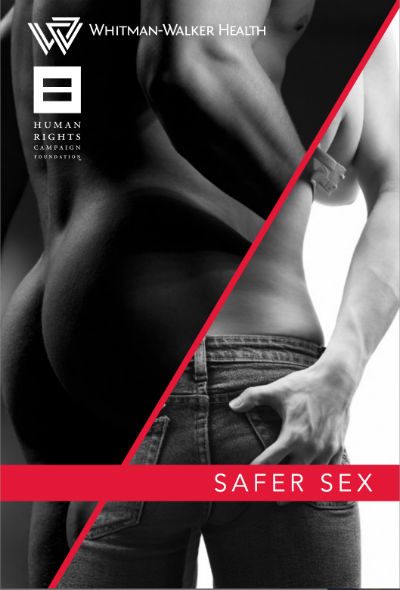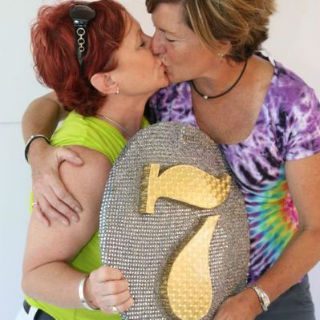 The safer sex guide for every queer identity.
The safer sex guide for every queer identity.
I’m an actively practicing bisexual babe. After dating female-bodied women for eight years (and being married to one for five), I started sleeping with cis-gendered men again. My first thought, after “Plot twist! Who saw this one coming?” was “Crap! Now I need to worry about sex again”.
It’s true that lesbians who sleep with lesbians have a lower risk of transmitting sexually transmitted diseases and infections like HIV to and from each other compared to other sexual pairings. The sexual activities most commonly practiced by female-bodied lesbians who sleep with other female-bodied lesbians like vaginal oral sex and vaginal penetration with dildos, vibrators and your good ol’ fashioned digits are some of the lowest risk sexual activities out there.
However, we are certainly not immune to the physical risks of sex. Further, we live in a sexually fluid future, one that actively embraces multiple spectrums of identities, sexualities, bodies and relational pairings. And the thing about the wonderful, blurred-boundaries of sexual fluidity is, well…fluids.
At its most basic, safer sex is practiced by ensuring that fluids, such as blood or vaginal fluids, do not pass between bodies during sex. Precautions that can be taken include using barriers for penetration and oral sex and not sharing sex toys or, if doing so, washing them with soap and water or using a new condom for each partner. Even so, STDs such as herpes and crabs can be passed on through skin contact alone.
The only way for two female-bodied people to be sure that they are not at risk during sex is if both have been fully tested, and have not had sexual contact with any other women or men since.
Flesh-and-blood penises have gotten a bad rap in the female-bodied queer community for several reasons including the perception that they’re somehow “dirtier” than our vaginal bits as they tend to be the primary transmitters of STDs/STIs and other risks of sex such as unwanted pregnancy.
As we embrace sexual fluidity and the sparkling spectrums that make up our community, we must also embrace the idea that two female bodies having sex together isn’t necessarily the safest way to play. We no longer live in a gold-star world which is great news for this non-gold star girl but also means we’ve got to pay better attention to our sexual health.
Lucky for us the Human Rights Campaign (HRC) Foundation, in collaboration with Whitman-Walker Heath (WWH), released an updated guide to practicing safer sex – aptly called Safer Sex – that includes essential tips to minimize the spread of HIV and other sexually transmitted infections (STIs) made specifically with the queer community in mind.
This pocket-sized publication can easily find a forever-home in your purse, dresser drawer or get-lucky jeans and includes comprehensive and inclusive information for all identities and orientations including a handy guide chart to STI risks according to type of sexual activity.
While the LGBT community continues to make extraordinary strides in equality, sexual health remains a top concern. We are still facing staggering rates of HIV in the U.S. – driven largely by misinformation, stigma and societal barriers to information, including the heterocentric safer sex cliches that dismiss the female-bodied queer community with basic messages such as “wrap it up”. “There is such a need for affirming safer sex information that pulls no punches,” says Justin Goforth, Director of Community Relations at Whitman-Walker Health, “and this guide is it.”
Safer Sex brings us a more nuanced approach to safer-sex that represents all of our queer identities and sexual pairings so that we are more free to explore our ever-changing sexual selves and practices along the spectrums of gender, sexuality and identity – safely – so that we can go back to worrying about what our ex-wives will think about our new cis-gendered boyfriends instead.
Get it on with your copy of Safer Sex at www.hrc.org



